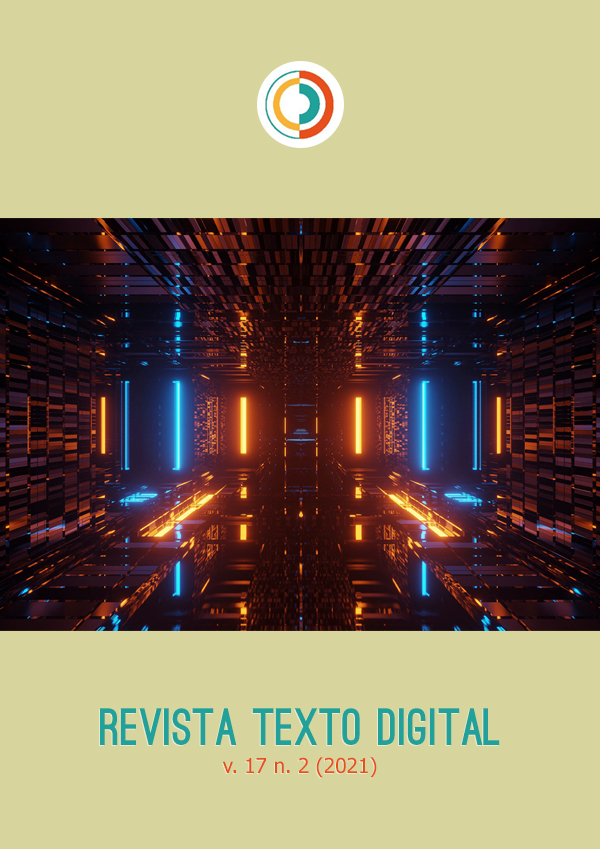The alligator’s meaning-making in pro-vaccine memes
a multimodal analysis according to the social semiotics perspective
DOI:
https://doi.org/10.5007/1807-9288.2021.e81330Abstract
This article aims to analyze the production of meanings and the influences of the three metafunctions of the Grammar of Visual Design (GVD), proposed by Kress and van Leeuwen (1996, 2006, 2021), in three memes collected from the internet, whose theme runs through the public event, in which the President of Brazil, Jair Bolsonaro criticizes vaccines against Covid-19. Knowing the impact of this genre of humorous nature and, above all, of political and ideological bias, our research intends to cover the successive representations attributed to the alligator animal in memes after the repercussion motivated by the authority discourse in social media. In our analyzes, we adopted the assumptions of multimodality through the theoretical-methodological approach of the GVD, taking into account the representational, interactive, and compositional metafunctions to ascertain how the meanings are constructed in the three analyzed memes and how they attest to the authority of the images in the conjuncture promoted by globalization. In the conclusions, we highlight the potential of multimodal discourses that emerge and go viral in environments mediated by the digital culture and their transformations as they are reproduced.
References
CHEVALIER, J.; GHEERBRANT, A. Dicionário de símbolos: mitos, sonhos, costumes, gestos, formas, figuras, cores, números. 34. ed. Rio de Janeiro: José Olympio Editora, 2020.
DAWKINS, R. The Selfish Gene. Oxford: Oxford University Press, 1976.
FLICK, U. Designing qualitative research. Los Angeles: Sage, 2007.
FREIRE, P. Pedagogia da autonomia: Saberes necessários à prática educativa. São Paulo: Editora Paz e Terra, 2004.
FRUTUOSO, A. Pobre e de direita: representações de sentido em textos verbo-imagéticos. In: LIMA, Ana Maria; GOMES, João Bosco; SOUZA, José Marcos (org.) Gêneros multimodais, multiletramentos e ensino. São Carlos: Pedro & João Editores, 2019. p. 88-95.
HALLIDAY, M.A.K. An introduction to functional grammar. 2. ed. London: Edward Arnold, 1994.
HODGE, R.; KRESS, G. Social Semiotics. London: Polity Press, 1988.
KRESS, G; VAN LEEUWEN, T. Front Pages: (The critical) analysis of newspaper layout. In: BELL, Allan; GARRET, Peter. (eds.) Approaches to media discourse. Blackwell Publishing, 1998. p.186-219.
KRESS, G; VAN LEEUWEN, T. Multimodal Discourse: the modes and the media of contemporary communication. London: Arnold, 2001.
KRESS, G.; VAN LEEUWEN, T. Reading images: The Grammar of Visual Design. 1. ed. New York/London: Routledge, 1996.
KRESS, G.; VAN LEEUWEN, T. Reading images: The Grammar of Visual Design. 2. ed. New York/London: Routledge, 2006.
KRESS, G.; VAN LEEUWEN, T. Reading images: The Grammar of Visual Design. 3. ed. New York/London: Routledge, 2021.
LIMA-NETO, V. Mesclas de gênero no orkut: o caso do scrap. Dissertação de mestrado em Linguística. Universidade Federal do Ceará, 2009.
RIBEIRO, A. E. Escrever hoje: palavra, imagem e tecnologias digitais na educação. São Paulo: Parábola Editorial, 2018.
SHIFMAN, L. Memes in digital culture. Massachusetts Institute of Technology, 2014.
TERVARENT, G. Attributs et symboles dans l`art profane, 1450-1600, Genebra, 1959. p. 28-30.
VAN LEEUWEN, T. Introducing Social Semiotics. New York/London: Routledge, 2005.
VAN LEEUWEN, T. Multimodality. In: The Routledge Handbook of Applied Linguistics. New York: Routledge, 2011. p. 668.
Downloads
Published
Issue
Section
License
Copyright (c) 2021 Klausney Muniz Sampaio, Antonia Dilamar Araujo

This work is licensed under a Creative Commons Attribution 4.0 International License.
Authors who have their works published in Texto Digital agree that:
Copyrights remain with the authors, who grant the journal the right of first publishing their submitted manuscripts. All materials published by the journalare under an Attribution 4.0 International - Creative Commons License, which allows them to be shared since authorship and first publication credits are mentioned.
The Attribution 4.0 International - Creative Commons allows the copy and redistribution of the material in any medium or format, as well as its adaptation for any purpose, even commercially.
Authors can take additional contracts for non-exclusive distribution of the version of their works published by our journal separately (e.g. to publish it in an institutional repository or as a book chapter) with both expressed authorship acknowledgment and Texto Digital’s first publication credit.



